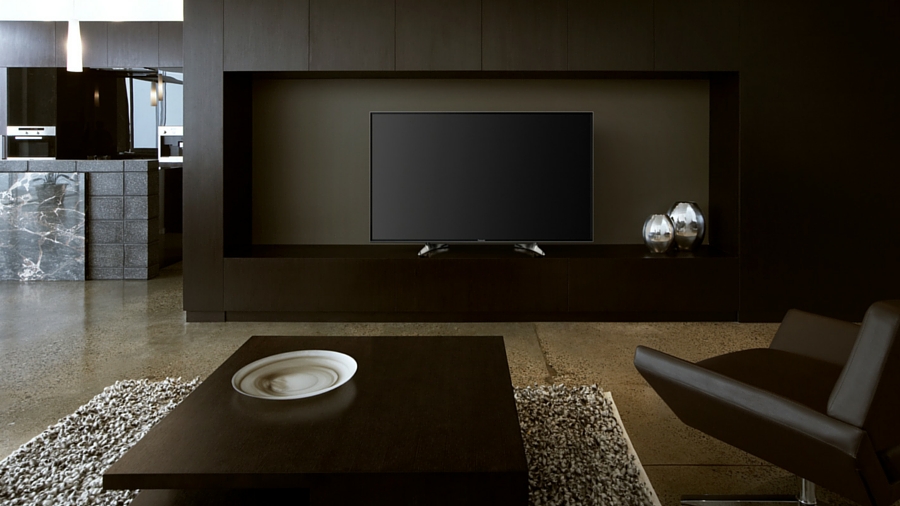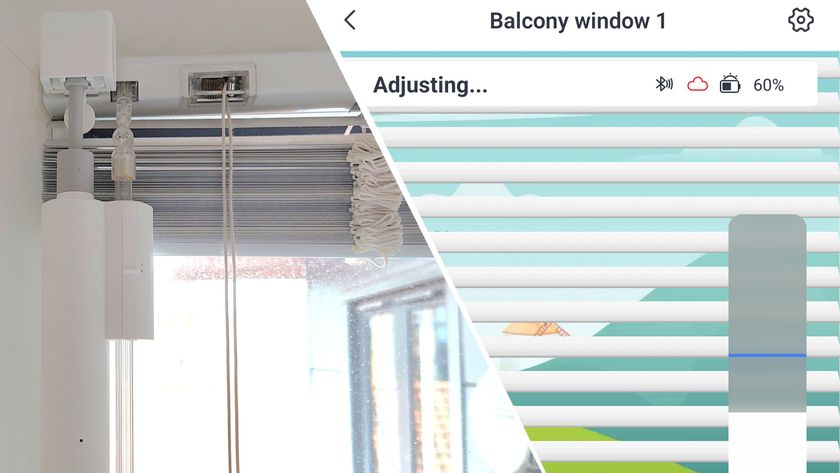Why you can trust TechRadar
One of the biggest downsides of the 40DX600 is that it doesn't do HDR. Considering that HDR is supposed to be the next revolution in TV watching, that's a shame. But don't kid yourself – this is an assured 4K TV ready easily capable of demonstrating just how impressive the new resolution can be. (And, if you can't fathom shelling out for a non-HDR 4K TV, take a look at the one-step-higher 40DX700.)
That said, being saddled with boring old standard dynamic range is not the quite prison sentence you might have imagined.
A blast of football in 4K reveals not only a great amount of detail, but more than enough brightness and motion clarity to carry it off. When the camera swings into the penalty area quickly there is a touch of motion judder, but it's so slight; there's a fluidity to 4K here I hadn't expected.

It's crucial, too because motion blur – still common on LCD panels of this price – can make 4K resolution utterly pointless for video. Kudos to the 40DX600's nifty frame interpolation and backlight scanning for that, though there's something about the 40DX600's small size that is troubling: Is 4K really that impactful on a 40-inch TV?
I would argue that it is with the very best, brightest content. That means sport. For example, some 4K football reveals clearly defined players even from distant camera shots, and the kind of clarity in faces in the crowd that make you feel much closer to the action, and that 4K sport is a real event. That feeling is almost entirely missing during some 4K action from Elysium, which looked almost indistinguishable from Full HD on the 40DX600.

Still on 4K sport, the 40DX600 impresses further with colour clarity and brightness. OK, so there's not the blinding brightness of HDR and the exceptionally vivid colours it brings, but the average TV watcher who's never even seen HDR in action yet (and – whisper it – may not even like it) will be thoroughly impressed by the 40DX600's subtle colour definition.
There's little in the way of light spill from the edge LED backlight, but it must be said that the 40DX600's viewing angle is not great; watch from the wings and the colours do pale significantly. That also applies to black levels, but here again the 40DX600 punches above its weight when viewed head-on.
Full HD material retains all of these plus-points, though do be wary of watching standard-def channels from the built-in HD tuner. They do look pretty blocky, though just about clean enough to watch.
The 40DX600's Firefox OS extends to how external devices are handled, with circular icons taking you to videos stored on a USB stick – and I got plenty of playback skills from the 40DX600.

For the first time ever, I managed to get a 4K TV to playback 4K-rendered files in MKV, MP4 and TS formats. The 40DX600 also supported a plethora of files encoded in MPEG-2, MPEG-4 and H.264, including AVC HD, MPEG, MP4, AVI, WMV and even WMV HD.
Sound off
The 40DX600 isn't blessed with anything other than average audio. It's almost always the way with flat TVs at this price-point, but it's hard to get excited about the 40DX600's three basic settings: standard, music, and ambience. All three are much alike, featuring plenty of clarity, but little low frequency.
However, if you're watching a movie I suggest you engage the virtual surround mode and push the bass up a tad. It's not the surround sound it claims to be, but it does give a fuller, more balanced end product, albeit with slightly harsh treble highs.
Incidentally, from a USB stick or a networked PC or Mac, the 40DX600 played MP3, M4A and WMA music files as well as lossless files including FLAC and WAV formats.
Jamie is a freelance tech, travel and space journalist based in the UK. He’s been writing regularly for Techradar since it was launched in 2008 and also writes regularly for Forbes, The Telegraph, the South China Morning Post, Sky & Telescope and the Sky At Night magazine as well as other Future titles T3, Digital Camera World, All About Space and Space.com. He also edits two of his own websites, TravGear.com and WhenIsTheNextEclipse.com that reflect his obsession with travel gear and solar eclipse travel. He is the author of A Stargazing Program For Beginners (Springer, 2015),














